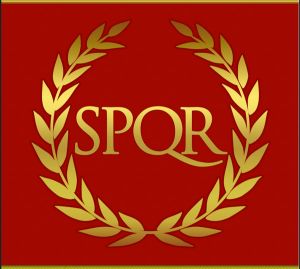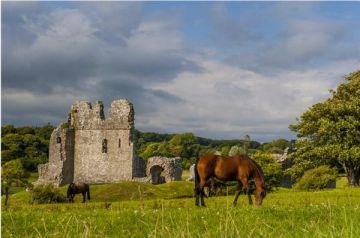
History
In 1963, architect JM Lewis was excavating a corner of the Caerphilly Castle site, looking for evidence of a Civil War redoubt fort. In the process of unearthing the 1645 Civil War fort Lewis stumbled upon something totally unexpected; evidence of a much larger Roman fort, dating from the 1st century.
The Roman fort is bounded on one side by the defences of the medieval moated castle, and by the modern Crescent Road and Nantgarw Road. The fort totally encloses the Civil War redoubt.
The Roman site was bounded by earthwork defences, with a bank of turf and clay atop a base of cobbles. The base was 24 feet wide and outside it stood a timber revetment with a pair of V-shaped ditches 5 feet apart. Each ditch was over 9 feet wide and 3 feet deep. Only a part of the site was excavated, but archaeologists concluded that the fort was about 360 feet square, enclosing an area of just under 3 acres.
Excavations unearthed late 1st century pottery, pieces of glass bottles dated to the early 2nd century, and small pieces of lead. Based on the finds archaeologists concluded that the fort was built around 75 AD and remained in use until the mid 2nd century. It was probably an auxiliary fort, built to house a garrison of 500 men. There was probably a civilian settlement outside the fort, with at least as 500 inhabitants.
Visiting
There are no obvious remains of the Roman fort above ground, but the site is easy to find. It is bounded by Crescent Road to the west, Nantgarw Road to the north, and by North Lake and the castle defences to the east.It is rather difficult to make sense of all the turf-covered remains, but the site is fascinating, with the water bounding one side and a treed area to the north and west, and a wealth of interesting bumps and turf-covered remains easily visible to the naked eye. There is free parking along Crescent Road.



